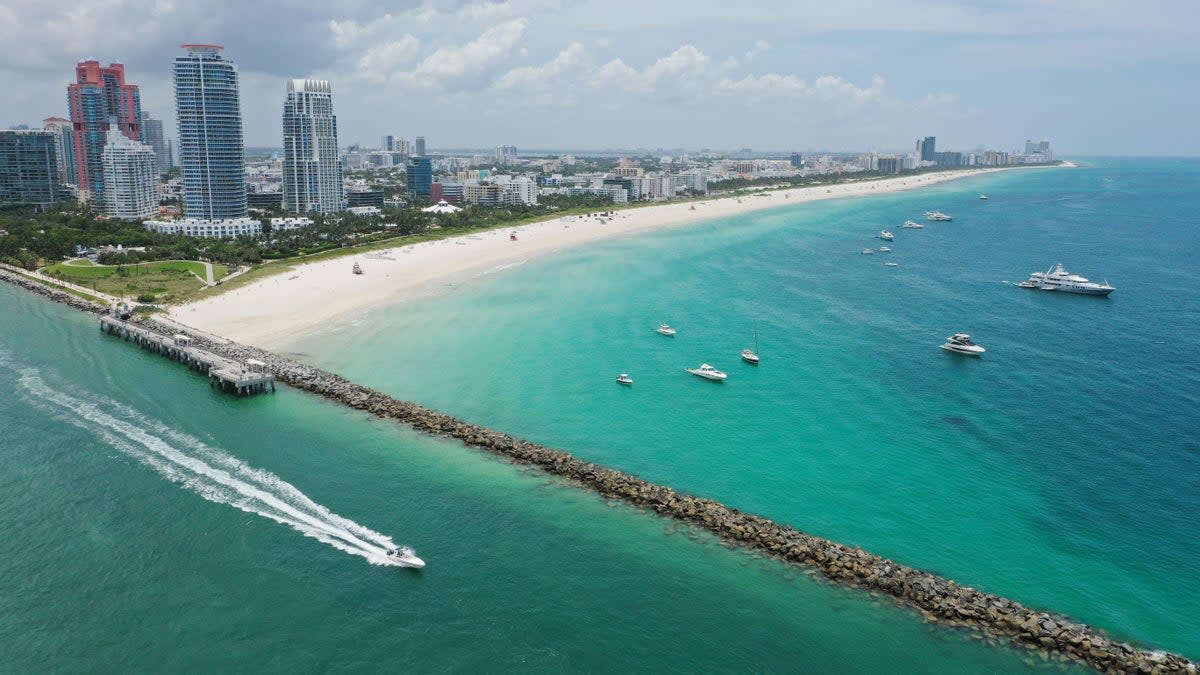Don’t believe the hype. The ‘snowbird’ retirees are not fleeing Miami
For a few years during the pandemic, it seemed like the “snowbird,” the stereotypical retiree moving to the sunny acres of Florida, might be going extinct.
An annual study of where US seniors choose to retire logged a precipitious drop in the Sunshine State’s most famous city. In 2021, Miami was the number eight retirement destination in the country, according to the research by financial advisor SmartAsset. The following year, it had tumbled more than 150 places, all the way down to number 168.
News reports heralded a great Florida exodus, with nearly 500,000 moving out of state in 2022, a worrying sign for a state that was also the top choice for retirees nationwide that year. Others pointed to Baldwin County, Alabama as the next big thing in senior living.
Perhaps it was all the uber-wealthy snapping up scenic real estate during the pandemic. The number of millionaires and billionaires living in Miami grew by 75 per cent over the last decade, according to a study by investment migration firm Henley & Partners and New World Wealth. By the end of 2023, the cost of living in Miami was well above the national average.

Perhaps Governor Ron DeSantis had reached the limit of acceptance for his particular adversarial brand of politics, in which gay people, trans people, Black history, librarians, vaccines, and the Walt Disney corporate were all but deemed enemies of state.
Perhaps, but perhaps not. Whatever was going on during the peak pandemic years seems to have receded, and the path of the snowbird is still as vibrant as ever towards Miami.
“At the end of the day, a lot of people are moving out of state in retirement,” Nicolas Dumas, of Malta, New York’s Retirement Planning Group, LLC, told The Independent.
And for many New Yorkers, as ever, the destination is Florida. The Empire State consistently ranks as among the top states losing retirees, and Florida consistently ranks as the top state gaining them.
All of Florida has no income tax, and a generally lower cost of living than other parts of the country, but one region reigns supreme for retirees: Miami. According to a study from moving company Hire a Helper, analyzing US government population data from 2023, the 70 mile stretch encompassing the Miami-Fort Lauderdale-West Palm Beach areas was the number one retirement destination in the country.

That’s even though the financial considerations of moving to Miami have shifted considerably. The draw of the city has long been about dollars and cents: you could move from a place like New York City, with its astronomical cost of living, to another global city, riding into retirement with some extra money and a whole lot more sun to boot.
However, between 2019 and 2023, it got a whole lot less advantageous to make the move, thanks to housing costs rising about 40 per cent in the last four years, and the price of utilities and gasoline rising even faster than in New York. All told, in 2023, someone with a $100,000 salary in Manhattan would save an estimated $37,166 a year by moving to Miami, down from more than $51,000 in savings just four years earlier, according to a study from SmartAsset.
Those weren’t the only financial changes. Last year, the price of car insurance in Florida was up over 24 per cent, while the price of homeowners insurance grew by nearly double that amount, while home prices were up roughly 60 per cent since 2020.
If the idea of moving to Florida was to make a pension or government retirement benefits go a little further, changes like these complicate the picture.
Still, these factors don’t seem to have slowed down the retirement train to Miami.
In fact, looking back at the last decade or so, the Florida Chamber of Commerce found that not only is migration into Florida growing, it’s rate of growth has also been increasing steadily since 2017.
It seems that despite the changes to the economy and politics of Florida, Miami won’t lose its status as a retiree haven any time soon, and the more than 72,000 residents of the city aged 65 and over will continue to be in good company.

As The Independent has reported, population trends rarely follow one set model. Just because a state is getting more expensive, doesn’t mean it’s going to suddenly see a massive population decline or enter a doom loop — just look at California.
You might think the state, which has a sky-high cost of living and population growth slowing to a trickle, might collapse in on itself like the faded Rust Belt regions of the upper Midwest or Appalachia, but that hasn’t been the case.
“Some people outside of the state like the idea of California being basically in a doom loop and everything is a disaster here,” Hans Johnson of the Public Policy Institute of California recently told The Independent. “If you look at the reality, I would say that the desirability to live in California is quite high, based on pretty direct measures which include the cost of housing.”
The same goes for Miami. Sometimes, a state or city just has that special something, and makes its own trends. For Miami, the recipe is simple.
“They like the weather down there and the tax breaks,” Dumas said.
And neither of those look like they’re going to be changing anytime soon.
